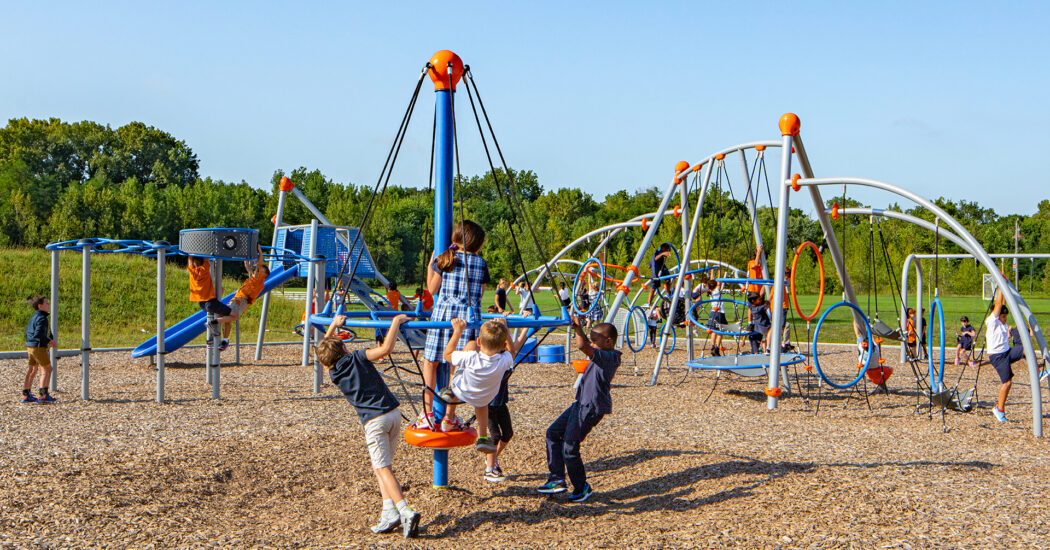Synthetic Turf
-
Category
Innovation -
Posted By
Schmidt Associates -
Posted On
Feb 12, 2012
Synthetic turf is MUCH MORE than a good economic choice. Football fields have been going green lately—that is green as in sustainable and good for the environment. We all think back to the Friday night high school football game or the cool Saturday afternoon college games. We can also associate green with the color of the field, or the color of the stains on the uniforms, or even the smell of the freshly mowed field. However, over the past decade, synthetic turf athletic fields have started to emerge all over the world—and not just for football. The original idea was a more durable, long-lasting field that could withstand hours of play in all weather conditions without a worry of wearing out the grass. The initial costs of these fields were high, but the economic payback would be much higher. Today, many sports at all levels are played on synthetic turf. These primarily include football, soccer, baseball, field hockey, lacrosse, rugby, and tennis. In some instances, homeowners and businesses have even replaced their grass lawns with synthetic turf.
With care for our environment becoming perhaps as important as the economics, now there is another reason to choose a synthetic turf field over the traditional grass field. Synthetic turf surfaces of the past were merely carpets on top of a concrete slab. The industry has come a long way recently, and the “new” synthetic turf fields offer many environmental benefits—even though they involve plastic and rubber!
The basic design of a modern synthetic turf field includes a compacted subgrade, drainage tiles, stone base, backing pad, synthetic fibers, and infill material. The object is to replicate a natural turf field as closely as possible—in feel, play, and appearance. While a variety of colors are available (we have all seen blue at Boise State), green is the most widely used.
Of course there are many other benefits (primarily use time and economics) to choosing synthetic turf in lieu of natural turf. However, there are also many environmental benefits as well:
- Elimination harmful pesticides, fungicides, fertilizers, and herbicides
- Eliminates the need for mowing and aeration, conserving fuel and reducing pollution
- Removes grass clippings and thousands of tires from landfills
- Eliminates the need for irrigation systems, and drastically reduces the need for water
- Materials are 100% reclaimable and recyclable
- Storm water drains directly and quickly through the synthetic turf system, reducing surface drainage issues often associated with natural turf fields
- The issues of “lead” and “excessive” heat have been associated with these fields over the years; however, manufacturers have proactively adjusted their materials and systems to eliminate these concerns
- Natural turf fields that are not properly constructed and regularly maintained cause more injuries that synthetic turf systems that require minimal maintenance.
Synthetic turf fields and lawns can contribute to the following LEED credits:
WE Credit 1.1: Water Efficient Landscaping: Reduce by 50%
WE Credit 1.2: Water Efficient Landscaping: No Potable Water Use or No Irrigation
MR Credit 2.1: Construction Waste Management: Divert 50% from Disposal
MR Credit 2.2: Construction Waste Management: Divert 75% from Disposal
MR Credit 3.1: Materials Reuse: 5%
MR Credit 3.2: Materials Reuse: 10%
MR Credit 4.1: Recycled Content: 10% (post-consumer + ½ pre-consumer)
MR Credit 4.2: Recycled Content: 20% (post-consumer + ½ pre-consumer)
MR Credit 5.1: Regional Materials: 10% Extracted, Processed, & Manufactured Regionally
MR Credit 5.2: Regional Materials: 20% Extracted, Processed, & Manufactured Regionally.
Synthetic turf fields have become a viable option for fields when weighing the maintenance and upkeep of conventional natural turf fields. Although first costs may discourage some Owners from looking into these fields, life-cycle costing may demonstrate the savings these fields provide in the long run.







